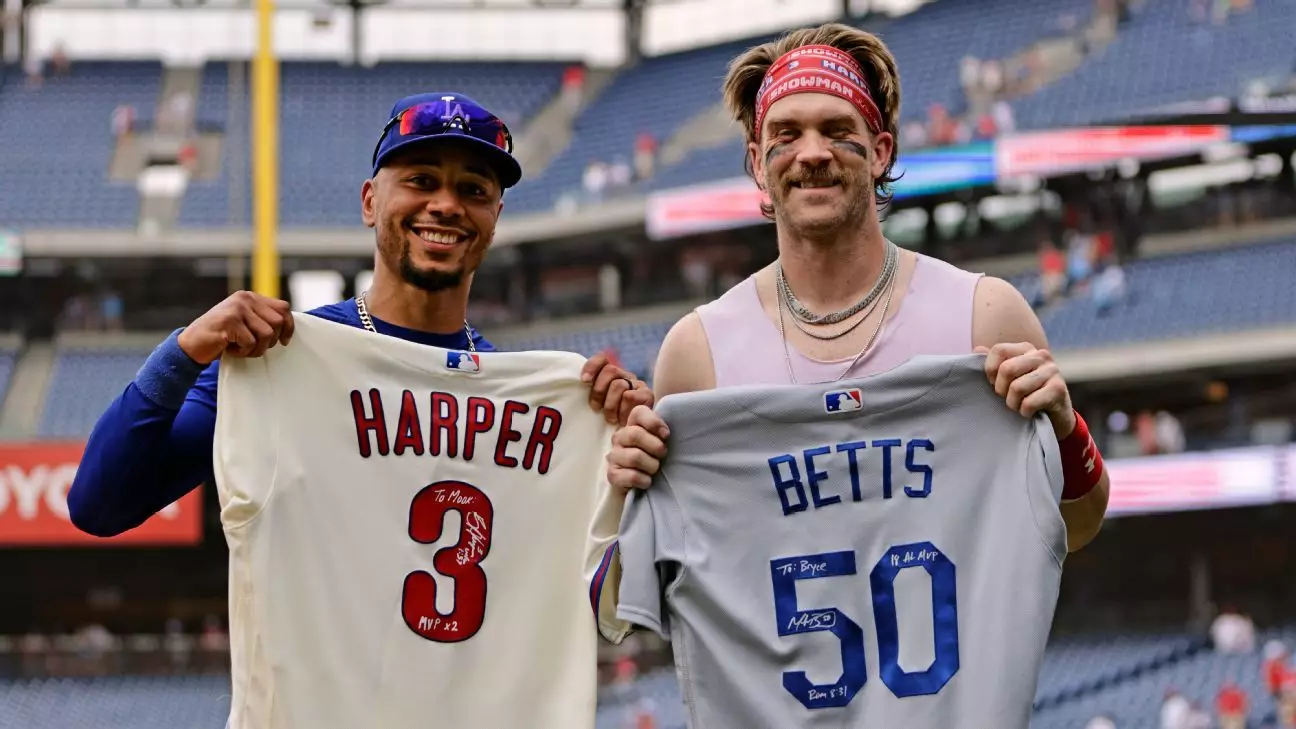In the realm of Major League Baseball (MLB), the financial clout of clubs like the Los Angeles Dodgers has become a central theme in shaping the competitive landscape. The Dodgers, with their staggering budget that topped nearly $320 million, are at the forefront of a spending culture that has ignited both admiration and ire within the sport. As Bryce Harper, a two-time National League MVP and Philadelphia Phillies star, candidly noted, complaints about such fiscal strategies often stem from a sense of defeatism. His unapologetic praise for the Dodgers marks a turning point: it’s not just about the dollars spent, but the tangible success that accompanies the investment.
The Unfolding Drama: Complaints vs. Competence
Criticism of the Dodgers and their lavish spending is not new. Detractors argue that this “buying success” approach stifles competition, giving wealthier teams an unfair advantage. Harper’s blunt assertion that only “losers” complain about high payrolls sheds light on a paradigm shift within baseball. His perspective challenges the conventional wisdom that variance in financial capability is detrimental. Instead, it highlights how strategic financial decisions can elevate performance and attract top-tier talent to franchises.
The Dodgers’ recent additions—pitchers Blake Snell and Kirby Yates among them—are not arbitrary splurges but calculated moves that signify their commitment to sustained excellence. Their strategy is rooted in the belief that to compete at the highest levels, financial investment is essential. For Harper, embracing this reality can only strengthen the league—not weaken it.
The Changing Dynamics of Player Salaries
As MLB’s average player salary crossed the $5 million threshold for the first time, the implications of this financial evolution cannot be understated. The New York Mets, boasting the highest payroll in MLB, are emblematic of this transformation, with superstar Juan Soto earning a record $61.9 million on Opening Day. These figures tell a compelling story of a game where financial muscle is linked to on-field performance.
However, the landscape is not without complexities. The impact of deferred payments on player salaries illustrates the multifaceted nature of financial contracts in baseball. Shohei Ohtani’s enormous figure of $70 million, discounted to a mere fraction of its value due to future payout structures, raises questions about transparency and equity in the game’s financial dealings. Such intricacies complicate the narrative around player compensation, underscoring a gap between perceived and actual earnings.
Commercial Viability and Fan Sentiment
Baseball commissioner Rob Manfred has noted the growing concern among fans regarding the absence of a salary cap. The backlash against perceived inequalities stems from an innate desire for a balanced playing field. Yet, this very imbalance may fuel the excitement around the sport, as franchises with deep pockets build juggernauts. The interplay between financial might and on-field success serves as a testament to capitalism’s role in shaping the game.
The allure of playing in Los Angeles, a vibrant hub of culture and opportunity, further complicates the narrative. Harper aptly pointed out that Los Angeles’s appeal—ranging from nightlife to sports—undoubtedly lures top talent. It goes beyond just economic incentive; it’s about playing in an environment that’s not only competitive but also captivating.
High Stakes and Long-Term Consequences
A focus on such extravagant expenditures raises questions about sustainability in the long term. As teams like the Dodgers splash cash with little regard for financial prudence, one must ponder the potential ramifications of this strategy. Will a gradual increase in payrolls trigger a backlash among smaller-market teams, thereby widening the already pronounced competitive gap?
Likewise, how will initiatives aimed at creating a more equitable environment impact player movements in the future? If a salary cap or other regulatory measures come into play, teams that have heavily invested in an expansive payroll could find themselves in a precarious position. The ongoing discourse surrounding MLB’s financial structures reflects a foundational tension that could redefine the landscape for years to come.
As the game continues to evolve amid these financial shifts, one thing is clear: the interplay between fiscal prowess and athletic achievement will remain a captivating narrative at the forefront of baseball’s next chapter.

